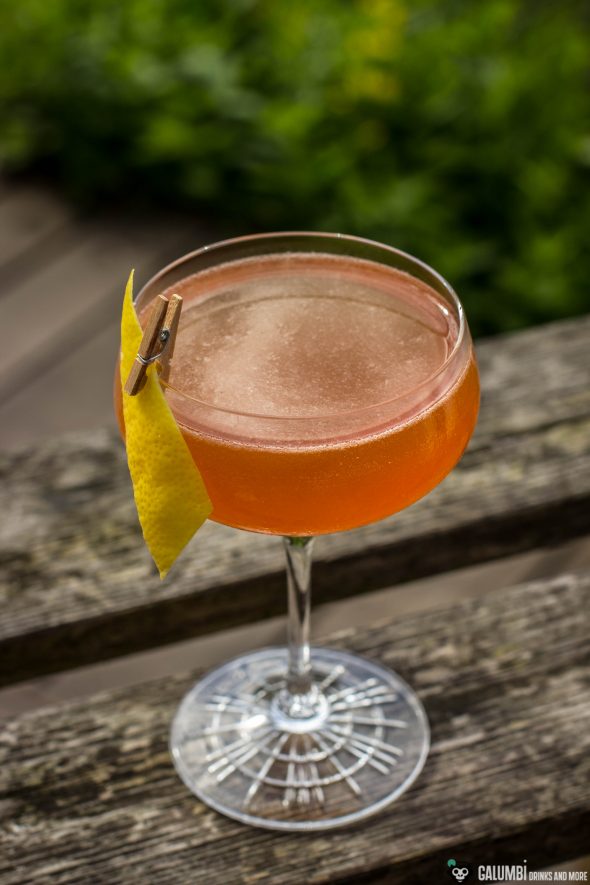
After a short holiday-summer break here on the blog, today I will continue with a bottle of gin, to which I have a very special relationship. This is because at numerous gin tastings that I have moderated in the past, I have put this gin at the end of the tasting series (or at least almost at the end). Why did I do that? Well, the G’Vine Nouaison Gin has been on the market for quite some time (2001) (albeit in a different design) and for me it symbolizes the breadth of the gin taste palette – and it did this even before the big wave of New Western Dry Gins flooded the world. (provided test product)*
It stands for the breadth of the taste palette, because not everyone will immediately recognize it as a gin (at least that is my experience). If you compare it with more classic juniper representatives, it is immediately noticeable that there is something completely different in the glass. But what exactly is it that makes the G’Vine Nouaison so different?

Well, the word Nouaison means in French as much as the fruit formation of a flower and/or plant. In order to understand the Nouaison, one has to know that it also has a sister bottle, the G’Vine Floraison, which again means as much as “flower formation”. Compared to the actually more flowery and filigree Floraison, the Nouaison turns out a little more powerful and dry (which is also shown by the higher alcohol strength of 45% vol. compared to the Floraison which is bottled with an abv of 40%) The basis for the G’Vine gins is neutral grape marc spirit of the Ugni-Blanc grape variety from the New Aquitaine cognac region. Unusual here is the quadruple distillation, which is rarely found in the making of gin. The botanicals used include nutmeg, ginger, liquorice, bergamot, lemon, coriander, prunes, cassia cinnamon and, of course, juniper. The green blossom of the grape plant is particularly noteworthy.
Tasting Notes:
Aroma: Oranges and lemon peel combine with spicy juniper and beautiful liquorice notes to create a very appealing aroma. With time, the citrus notes tend a little bit towards mandarin, even prunes come through and merge wonderfully with cardamom and ginger into a really seductive scent, I really like this gin!
Taste: Also on the palate, you can find many things that already showed up on the nose. The citrus notes harmonize wonderfully with juniper and spices. Above all, it is the interesting mix of sweetish, almost oriental notes of prunes, ginger, cardamom and co., which, together with the fresh and slightly resinous notes, creates a tart, balanced overall picture.
Finish: herbaceous, woody with floral notes
If I want to have the G’Vine Nouaison in a classic Gin & Tonic, I usually choose a simple one (Fever Tree), but more often an extra dry tonic water (Schweppes). In fact, the gin also makes a very interesting and unconventional Negroni. Today, however, it is said to be something different – namely the Jockey Club Cocktail from Harry Craddock’s Savoy Cocktail Book from 1930. For this drink, Mr. Craddock lists “Crème de Noyau” as an ingredient, which is a liqueur based on apricot kernels and bitter almonds with a marzipan-like taste. Under the name “Crème de Noyaux”, the producer Tempus Fugit, for example, offers such a liqueur. Personally, however, I am very sensitive when it comes to marzipan or a marzipan-like taste, as marzipan is one of the few things in this world that I simply do not like. I am also aware that the sensations here diverge: I have met many a person who is also sceptical about marzipan, who perceived things as “marzipan-like” which I, in turn, did not perceive in this way and vice versa. Therefore, my recommendation may not apply to everyone, but since I personally really liked the Scheibel Alte Zeit Apricot Brandy and I appreciate it because of its complexity, I have taken the liberty of modifying the Jockey Club Cocktail to this effect. And I also added a barspoon of Fernet Branca – the drink really wins a fascinating depth that way.

Recipe “Improved Jockey Club Cocktail” (after H. Craddock, 1930, recipe slightly modified by me):
6 cl G’Vine Nouaison Gin
2.5 cl lemon juice
2 cl Scheibel Alte Zeit Apricot Brandy
0,5 cl sugar syrup
1 Barspoon Fernet Branca
2 Dashes Orange Bitters
2 Dashes Angostura Bitters
Preparation: Shake all ingredients in a shaker vigorously on ice and fine-strain into a pre-cooled glass.
Glass: Coupette
Garnish: lemon zest



Buying sources: At specialized retailers or online, for example at Conalco.
*The bottle for this review was provided to me by Conalco Spirituosen UG. The fact that this product has been made available to me free of charge for editorial purposes does not mean, however, that I have any influence whatsoever on the article content or my evaluation. Rather, it is for me always an unalterable condition to be able to review completely freely and uninfluenced.
